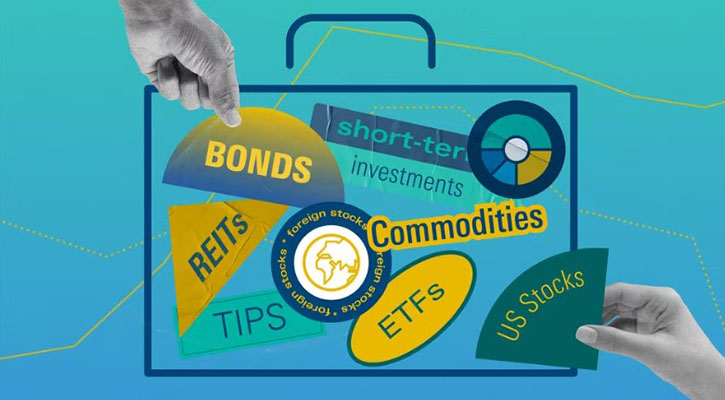Christine Benz: Hi, I'm Christine Benz for Morningstar.
Whether the proliferation of index funds and exchange-traded funds has helped drive increasing correlations and volatility in the market, has been the subject of some debate in the investment community during the past several years.
Joining me to discuss this topic is James Xiong, a senior research consultant for Morningstar Investment Management. And Mike Rawson is also here. He is an ETF analyst for Morningstar.
Gentlemen, thank you both so much for being here.
Mike Rawson: Thank you.
James Xiong: Thank you for having me.
Benz: So James, I'd like to start with you. You co-authored a research paper on the topic where you looked at the proliferation of index funds and ETFs, and what do you think the effects have been for the market. One thing that you pointed to is increased correlations. Let's discuss the general finding of the paper.
Xiong: That's right. The paper we are talking about is titled, "How Index Trading Increases Market Vulnerability." You can easily Google it and download it from SSRN, and my co-author is Rodney Sullivan. We made a connection between increased index trading and increased average stock correlation.
Part of our motivation came from a few interesting papers. For example, I remember one of them is written by three professors and the title is, "Has U.S. Stock Market Become More Vulnerable Over Time?" And the paper made a connection between the highest systematic risk of large stocks and tremendous growth in index trading.
So, in the meantime, two interesting phenomena popped up, too. One is that the average correlation among S&P 500 stocks has been getting higher and higher. And also the beta for different-style stocks like small, large, growth, and value has been convergent, meaning they're all approaching similar values.
Benz: We really saw that in 2008, in which anyone holding any sort of equity experienced losses, in some cases, of a very similar magnitude. It didn't matter what you were investing in, and you really had nowhere to hide?
Xiong: That's right. So, our goal was to explore how this could happen, and through a battery of rigorous tests, we were able to draw a link between the steady increase in index trading and increased average stock correlations.
Benz: So it's kind of intuitive why this might be the case. You have people buying big blocks of stocks and selling them. That would tend to increase correlations. So, if I'm not focused on buying ExxonMobil and Abbott, but rather just buying the S&P 500, that would tend to drive stock performance in a similar direction at similar times.
Xiong: That's exactly right. Specifically, we looked for quantitative measures in this paper to quantify the link between them. We looked at the cross-sectional trading patterns of volume changes, and we found that trading patterns are becoming more and more common, which means more and more stocks are bought or sold at the same time. So that is a strong indication of increased index trading or basket trading.
Benz: Now, Mike, I'd like to shift to you. You focus on exchange-traded funds, and I'd like to get your perspective on this question. It sounds like you concur that correlations are increasing, but you don't necessarily think that it owes entirely to the growth in assets that we've seen flow into ETFs and index funds.
Rawson: Absolutely, Christine. I definitely agree with James' paper. It definitely proves correlations have gone up, trading activity has gone up, and the co-movement of these stocks has increased and converged. However, I don't think the only factor, the only cause of this, is the increase in passive investing and the rise of ETFs and popularity of ETFs. In fact, in my mind, the biggest factor contributing to these rising correlations is fear.
Christine, you recently interviewed Meir Statman. One of the quotes that he said that I liked was that here we are in 2012, but yet it feels a lot like 2008. He mentioned 2008 is still fresh on people's minds. So, whether it would be the collapse of Lehman Brothers, the downgrade of the U.S. government debt, or the European sovereign debt crisis, the reaction is always the same: Sell stocks. ETFs and index funds are not immune to that; they are sold off just like any other risk asset.
Benz: I think, if we can all agree that correlations are on the rise, and we think maybe that there are a variety of reasons--such as the growth of index funds and ETFs as well as the growth of fear--the question for investors is if this is a fact of life for all of us, what are the implications for how we manage our portfolios? What are the practical takeaways that we can use to generate decent results, even though correlations are rising?
Xiong: I think on the positive side, the index funds have lower fees.
Benz: Absolutely.
Xiong: They have lower expenses than active funds. And second, they can provide investors easy exposure to specific diversified portfolios, such as diversified international stocks. And third, they can be tax-efficient.
On the other side, however, massive, I'm saying massive, index trading can distort stock prices. If the stock prices are distorted, then corporate financing decisions and investors' asset-allocation decisions can also be distorted. So, think about a case in which the stock market is well-connected and everybody is doing the same. Then this is not necessary a good thing because the market cannot exist.
So, finally, we learned that intra-stock correlation is getting higher and higher. Hopefully, the diversification across different asset classes, such as stocks and bonds, still works.
Benz: So it's all the more important, in fact.
Xiong: It's important.
Benz: Mike, how about you, what do you think are the main implications?
Rawson: I would agree completely. We know the correlations have increased. Paradoxically, that's caused diversification to be even more important than it was before. So, if you have a portfolio of maybe 10 or 20 stocks, whereas in the past that may have been diversified enough for you, now you might want to broaden out your number of holdings even further to get better diversification just because those stocks are likely to be more highly correlated.
Secondly, even though ETFs are part of this passive phenomenon and might be viewed as part of the problem, they also offer a lot of tools to combat the problem. For example, there are ETFs offered in a variety of different asset classes and at low fees. You also have ETFs that cover broad swaths of the market in one fund. For example, Vanguard Total Stock Market ETF covers the entire U.S. stock market, and it only costs seven basis points. So, ETFs can be viewed as part of the problem, but really they are also part of the solution.
Benz: It sounds like that's what James was saying, too.
One think I'd like to touch on is for individual stock investors, it sounds like maybe if correlations are running in the same direction, there might be opportunities. So if the market has sold everything off, that might give you the opportunity to uncover some securities that have been unduly beaten down despite their strong business fundamentals. Would you concur?
Xiong: I would agree. The problem is you have to wait until the market corrects this mispricing. In an ideal world, I would hope that there is a good balance between passive investments and active investments, because if one of them dominates, that's not necessarily a good thing.
Benz: So, for a healthy market you need the Warren Buffetts out there picking individual companies and securities, and you also need indexers?
Xiong: You need the independent research from investors--institutional investors and retail investors.
Benz: Well, thank you both for sharing your insights on this very important topic. We appreciate you being here.
Xiong: Thank you.
Rawson: Thank you.
Benz: Thanks for watching. I'm Christine Benz for Morningstar.com.




























